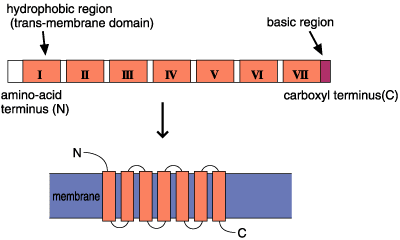 |
||
|
 |
||
|
| Apoptosis or programmed cell death is a process of self-directed death of specific cells, representing an important component of growth and development of multicellular organisms, and suppression of cancer cells. Radiation is also known to induce apoptosis. Better understanding of this mechanism may help medical and agricultural applications. We succeeded in cloning the gene (the plant BI-1) responsible for suppressing cell death (Fig. 1-15). This gene product possesses seven membrane spanning regions. The plant BI-1 gene we isolated here suppressed Bax induced cell death in yeast (Fig. 1-16). The carboxyl terminal end of this gene is a product rich in basic amino acids and may interact with unknown proteins, which in turn suppresses apoptosis in yeast cells. The discovery of the common genes in plant as well as animal cells may facilitate the studies of evolutional significance of cell death suppressors. |
| Reference M. Kawai et al., Evolutionally Conserved Plant Homologue of the Bax Inhibitor-1 (BI-1) Gene Capable of Suppressing Bax-Induced Cell Death in Yeast, FEBS Lett., 464, 143 (1999). |
| Select a topic in left column |
|
Persistent Quest-Research Activities 2000 Copyright(c)Japan Atomic Energy Research Institute |